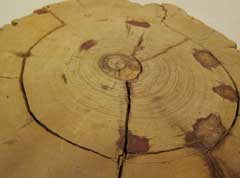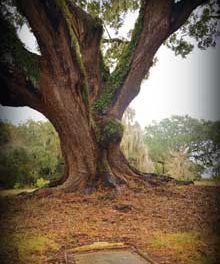A Conversation With The Mayor of Beaufort
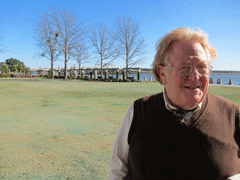 Next January Beaufort joins an elite group of American cities and towns in the Three-Century Club. Mayor Billy Keyserling will enjoy the rare privilege of presiding over his hometown’s landmark birthday, the latest chapter of a family history rich in public service to the Lowcountry and beyond. Shortly after the city officially began its 299th year, Lowcountry Weekly Publisher Jeff Evans and I had the opportunity for a candid conversation with Mayor Billy over coffee on the waterfront.
Next January Beaufort joins an elite group of American cities and towns in the Three-Century Club. Mayor Billy Keyserling will enjoy the rare privilege of presiding over his hometown’s landmark birthday, the latest chapter of a family history rich in public service to the Lowcountry and beyond. Shortly after the city officially began its 299th year, Lowcountry Weekly Publisher Jeff Evans and I had the opportunity for a candid conversation with Mayor Billy over coffee on the waterfront.
As we prepared to sit down with Hizzoner to talk about things like how the city’s past impacts its future, word was just beginning to spread that what many consider a key cultural element had literally become history. Beaufort Performing Arts (BPA), thought to be on the rebound after a series of fiscal issues (including two separate embezzlement scandals) was apparently finished, another alleged victim of the recession. While efforts to revive BPA are underway at this writing, the full story remains unfinished as we go to press.
Mark Shaffer: We’re known nationally as an art town and yet most thriving art towns have a strong performing arts scene. How important is something like BPA to Beaufort’s future?
Billy Keyserling: Very important. But Beaufort is a small town. We call ourselves a city but we’re 13,000 people, moderate to low income. Yet we serve as home to about another 60,000. The historic district and downtown drives the surrounding area in terms of real estate, culture and identity, but it doesn’t pay for itself. The challenge is to reach out to that bigger [outlying] community and ask, “how do we engage them?”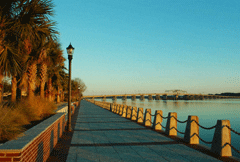
MS: These are the economics of an historic resort and retirement community.
BK: Beaufort County has the 5th highest concentration of millionaires per capita in the country and we have one of the best-educated populations in the state. And so the question remains how do you engage this bigger group of people? It’s one of the reasons I raised concerns about BPA when it began. It started with a [substantial] chunk of money from the city. The question was could it sustain itself? [These days] dollars are slimmer and competition is stiffer. That is the struggle. As mayor of the town I can only go to the well so many times. There are so many organizations. It’s hard to provide these bigger, broader community things.
Jeff Evans: But there are ways to appeal to those outer areas, like the Fripps and the Dataws.
BK: One [possible] answer may be to do what I am doing, which is going to those places like Dataw and Spring Island and saying “you’re part of my city. At least become a member of Main Street [Beaufort] for thirty-five bucks. You want things in the park? Help us pay for things in the park.” And that would be part of my [approach to BPA]: it’s going to take more than just the city. It’s going to take the bigger community, and it’s going to take private funding and private funding is hard to come by for everything at the moment.
In modern history Beaufort has always been a center for the arts, but that was because half a dozen people drove it. As those people leave there have to be new [leaders]. At one point it was mostly benefactors, now it’s mostly artists. We forget how little Beaufort is.
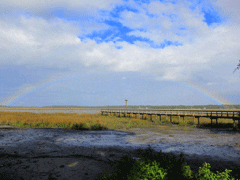
MS: Through the B3C lectures, presentations and projects we’ve heard a lot of memories about how things have changed, particularly over the last four decades. All of this will be part of a vast public archive. How do you envision its impact?
BK: I recently spoke to several classes in a joint meeting at Battery Creek High School and I looked into the audience and I saw black kids and white kids sitting together. That wasn’t the way it was when I was a kid. For them to understand where they are and where they can go, it would be good for them to understand just how much change there’s been. There was a point when we couldn’t go to the movies together, couldn’t go to school together, couldn’t walk down the street together. Yet, we might go to our back yards and play together. This is a huge change in a relatively small time.
I think about the time I spent with my father, a country doctor, making calls with him and seeing houses with no running water. People live much better. The 1960’s were important here. We had the Hunger Tour here and [Fritz] Hollings was inspired by what he saw to create the WIC program with Hubert Humphrey. In fact, if you were to look at the whole history of rural health, you can look at how far we’ve come and how we’ve led.
MS: That’s some of the bittersweet effect of the B3C project: seeing how far we come, but also being reminded of what’s been lost, as well.
BK: Probably my biggest fight on City Council may eventually be getting back to the issue of a day dock. If you look at the history of where we are today (Waterfront Park), this was a dock. When I was a kid I’d get in my little fourteen-foot bateaux, built by a patient of my father’s, and come over here and tie up at the docks. It was a big thing on Saturdays. [The Park] is one of the few places in Beaufort where there’s a hard edge between the water and the land. I don’t like that. It ought to be much more user friendly because boating is such a part of the culture here.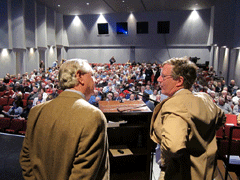
JE: All of this [waterfront park] was a working waterfront. The river was right there. At one time most of these buildings were built out over the water.
MS: Since we’ve veered off on this subject, it isn’t particularly user friendly for that busy boat culture moving up and down the Intracoastal either – not in the same way as, say, Georgetown, which also has a vibrant, real, working historic downtown. What do we need in this downtown to get that sort of thing going?
BK: We need people living here. I just did a rendering of the [Charles Street] post office block to see what would fit. You could put twenty one units there: nine single family homes, take the post office out, put a retail post office with retail space next to it and two floors of condos. There were nine houses there at one time. So, we’ve lost a great deal. Forty percent of the Northwest Quadrant is vacant. We’ve got to get higher levels of [population] density for downtown to be real. The tourism is fine, it’s a piece of what we are, but we’ve got to be more than that. We’re artificially full downtown with the hobby stores and the galleries – there’s nothing wrong with them, they’re great. But they don’t service the broader segment of the people as opposed to stores that deal in goods and services.
When I was a child we had two “five and dimes” on Bay Street, a car dealership, a used car lot, barbershop, two pharmacies and another on Carteret. We had three supermarkets downtown.
MS: All now pushed out into the urban sprawl.
BK: And yet, we have Habersham – a model [community] and successful. We have Newpoint – a model and successful. Beaufort – from the river to Ribaut Road and from Pigeon Point to the waterfront park – is more spectacular than anything you can build from scratch. It’s got a sense of place, historic buildings, a sense of mass and scale, streets that open up to the water, the churches. It’s exactly what these guys would like to build out in the middle of nowhere. We’ve just got to figure out a way to make it more attractive.
 JE: Having not grown up here, one of the things that makes it so attractive to me is that this has all occurred organically. [Years ago] when I lived on Hilton Head I can recall at least two separate occasions when the city fathers felt the need to try and create some sort of downtown. And no one gave a damn. I always thought that you can’t really impose it on a place after the fact.
JE: Having not grown up here, one of the things that makes it so attractive to me is that this has all occurred organically. [Years ago] when I lived on Hilton Head I can recall at least two separate occasions when the city fathers felt the need to try and create some sort of downtown. And no one gave a damn. I always thought that you can’t really impose it on a place after the fact.
BK: It’s hard to do.
JE: It always ends up being this Disney-esque sort of fake thing. What we have in downtown Beaufort grew over the centuries through the natural course of events.
BK: But it’s also gone backwards in the sense that we lost the retail opportunities, we lost this part of the city as the center of commerce. We have to build that back. The good news is that the form and the structure are still here.
MS: That’s the good news. The bad news is that we have all of this sprawl and outgrowth. Once it gets started it just seems to steamroll everything in its path without any real plan or concern. For instance, we’re looking at another fight over a possible Walmart on Lady’s Island.
BK: You’re right. That just makes it a bigger challenge for us. But it’s one worth fighting for. That’s the reason I support the Boundary Street [Redevelopment] Plan. One mile of redevelopment can double our population in an urban setting. And there’s a direct relationship between “walk-ability” and home values. The closer you are to where you want to be, the higher the prices. We also have to deal with our [real estate] prices, which are universally over-priced everywhere. But the walk-ability is key. I think [given the chance] most people would walk three blocks to the supermarket because they’re walking the equivalent and more when they go to Walmart. And they’ll pay a premium – a reasonable premium – to have that convenience. 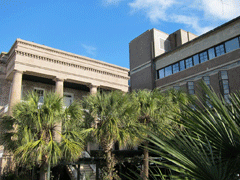
JE: Living in Pigeon Point, I really value the ability to get on my bike and ride to work downtown on a nice day. How many people in the country can say that? Not that I do it all that often, but I value it enormously.
MS: Tell us a bit about the nuts and bolts of the project.
BK: Well, the city can do the horizontal, meaning the streets and the sidewalks and the utilities. But the biggest part is approaching landowners and [asking them] “how can we help you improve your property to fit a need in the marketplace?” For example, there’s a tremendous need right now for a continuous care facility. So why not put it downtown?
I took a guy who’s an entrepreneur and showed him a piece of property – a block and a half on Bladen Street. It’s in the Historic District. There will be challenges, but that could mean forty or sixty couples just like that. If the market recovers, in the next couple of years I can see four to six hundred new housing units within walking distance [to the waterfront].
In one mile the Boundary Street Plan has five thousand residential units, four hundred thousand square feet of commercial. If we can [maintain this] then we’ve got an old town and a new town.
MS: The challenge is making and keeping [the housing] affordable.
BK: Particularly where you have indigenous families who are part of the culture of Beaufort who you don’t want to displace.
MS: Documenting our culture has been a big part of the Beaufort Three Century project. What was the impetus to put something like this together?

BK: [Over the years] I just started hearing too many people talk about the future of Beaufort like it was another place. We’ve been open to so many people coming here, and the people who come here tend to be joiners and participators, but a lot of those people really didn’t have a sense of Beaufort’s history. So, what better time than the tricentennial to look back and go forward, to help people have an understanding of how we became what we are as we make plans for where we want to go. I was overwhelmed by it, so I went to [B3C Project Coordinator] Deborah Johnson [and others] and they said “yes” and we sort of went from there. The disappointment is that we haven’t been able to raise the money to do as much as we’d like to do. With the exception of the pittance Deborah gets, it is totally volunteer.
MS: And she’s done a tremendous job marshalling all of this.
BK: She’s done an absolutely incredible job with so little. And they’ve done a great deal when you think about it. I hope all of this has positioned us to take advantage of this year, which is more about the visioning. The city has a [comprehensive] plan, but that’s not what we’re talking about. We’re talking about how [people envision] Beaufort in a hundred years. If [the people of Beaufort] have a quadracentennial, what are they going to look back at and what will have been the impact of this next generation?
MS: Which brings us to the recently announced Beaufort Fourth Century Project.
BK: A new separate organization that will take what was learned through the B3C process and the vision that I hope will be crafted, and put in the hands of every politician, religious and civic leader in Beaufort. It’s more than government. It’s about the whole community.
MS: What would you like to see done with all of this information that’s been collected, this digital archive that will the B3C legacy?
BK: I would think the recipient should probably be the library. But I hope there would be a way to sustain it so that it could continue to grow. The [Beaufort] Gazette by virtue of agreement will have some ownership, too. But I think that it ought to go to some public entity with the hope of taking Beaufort forward.
MS: Ideally, down the road, would you like to see that entity as a viable world-class museum?
BK: Yeah, ideally. But the practicality of funding it is going to require a lot more focus. Every piece of the Civil War played itself out in Beaufort. You can stand on that bluff and look down the street to where they signed the Articles of Secession, and you can look over toward the Port Royal Naval Hospital where they read the Emancipation Proclamation. You can look over to the tip of Saint Helena where the first school for freed slaves was built. There’s no place that embodies it more, but where do I get ten million dollars to endow [a museum]? I’ve asked [the B3C] historians for a [prospectus]. I’m going to find somebody with some money who wants a legacy opportunity – I don’t see it as grassroots. But there’s no point in even talking about it until I see an endowment because the city can’t do it, the county can’t do it, the university can’t do it.
In my mind I have [a location] in sight. I’m confident that somehow we’ll [eventually] get it, but I don’t talk about it because [it’s pointless] without the money. Even Henry Chambers rolled his eyes when I told him. And I said, “Henry, when you talked about this park what did everybody do? They rolled their eyes.”
MS: We’re not rolling ours. Good luck with that. But it’s still just another piece in the bigger puzzle.
BK: I also believe we should have a world-class art gallery that [would feature] traveling shows that would draw people from around the region – serve as kind of a cultural platform.
MS: So what’s actually going to happen next January, what can we expect for a three hundredth birthday for Beaufort?
BK: I don’t know. [Beaufort City Councilman] Mike McFee has agreed to take the lead from a city council point of view.
MS: He’s acting as liaison with the city?
BK: Right. He’s assembled a group of people. We’ve had two meetings and I think within the next month or so we’ll see a [tricentennial celebration] commission formed.
 They’re looking at having a juried show to come up with a logo that the city will own and license, so there will be one logo and uniformity – not a lot of trash. And you’ll pay to use it. If you’re printing T-shirts, like the Water Festival or the Gullah festival, you’ll pay to use it. A lot of this depends on harnessing existing events and have them focus on this rather than trying to create a whole new series of events. Although, I do see a big public event on that date or the weekend of that date where Beaufort Three Century would hand over their vision.
They’re looking at having a juried show to come up with a logo that the city will own and license, so there will be one logo and uniformity – not a lot of trash. And you’ll pay to use it. If you’re printing T-shirts, like the Water Festival or the Gullah festival, you’ll pay to use it. A lot of this depends on harnessing existing events and have them focus on this rather than trying to create a whole new series of events. Although, I do see a big public event on that date or the weekend of that date where Beaufort Three Century would hand over their vision.
JE: Sort of passing on the key to the next century.
MS: And Deborah can finally go on vacation.
BK: She deserves it. She won’t go, but she deserves it.
*As we go to deadline, the Mayor and others were involved in behind the scenes efforts to restructure and revive BPA. Be sure to check out the Mayor’s website, www.mayorbilly.com. Mark Shaffer can be reached by email at backyardtourist@gmail.com

